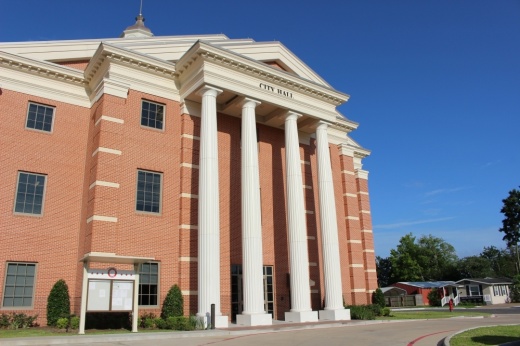The city’s last comprehensive plan was created in 2000 and spanned 20 years. The context of the new plan is addressing all the development in the pipeline, sustaining the tax base, livability and public safety, and parks bond implementation.
These city government officials met with Meredith Dang, AICP, practice leader for community planning at Kendig Keast Collaborative to discuss the data they collected in 2019 to construct Katy’s next comprehensive plan and to gain an understanding of the city’s most pressing issues and needs.
Dang referenced some of these data points as the plan’s focus areas: growth capacity, land use and development, transportation, economic development, and recreation and amenities.
Kendig Keast Collaborative found that Katy’s population increased by 55% between 2010-20, from 14,102 to 21,894. Including the Greater Katy area in that number would bring the total population to 375,000, which would make Katy the eighth of Texas’ 10 largest cities in 2020, according to the U.S. Census Bureau, Texas Demographic Center and the Katy Area Economic Development Council.
The Collaborative’s data also showed that 35% of Katy’s housing was built after 2000. However, data suggests housing still is not attainable for everyone, with 51% of renters paying more than 30% of their income in housing costs, a barometer to show housing affordability, Dang said.
The Collaborative also found that 95% of people who work in Katy do not live in Katy. Of all workers, 26,800 commute to the city; 1,419 live and work in the city; and 7,354 live but do not work in the city. This information was illustrated in Dang’s presentation and is relevant in evaluating service demands from an added daytime population that impacts things like traffic or economic development, she said.
There is also an abundance of park acreage—98.1 acres within the city of Katy and over 360 acres if including Harris County, according to Dang and data the Collaborative collected from the city of Katy's website.
Dang said that Kendig Keast Collaborative is simultaneously working on a parks, trails and recreation plan for the city that is currently underway and will wrap up at some point this summer.
“Doing these plans in parallel offers a really nice opportunity to sync them,” Dang said. “The results will be funneled right into the comprehensive plan.”
To see the city in a holistic view and prepare for change as part of the process of preparing this plan, Dang asked the council to identify what were the city’s most recent accomplishments.
Council Member Janet Corte and other officials mentioned the $33 million worth of mobility bonds, drainage projects, expanded detention ponds, increased green space, increased public safety and development of the Katy Boardwalk district that will bring lofts and hotels to the area as some of the city’s most recent works to be proud of.
But Commissioner Jason Ward of the planning and zoning commission noted that many of the initiatives the city has set forth have been more reactive than proactive.
“Listening to that list, there has been a lot of focus on getting where we need to be and not on going where we want to go,” Ward said, and council members agreed. “I’m excited to be going forward instead of trying to fix.”
Gary Mitchell, president and member of the Fellows of the American Institute of Certified Planners, listened in over the phone as Dang led the meeting with a presentation.
Dang identified five distinct phases of the comprehensive plan.
Phase 1, the Existing City stage, will be from January to April. This is when Kendig Keast Collaborative and Katy City Council will discuss Katy’s existing conditions. Public forums will be held to collect feedback from residents of Katy. The first of these meetings are March 1 and March 23 with the parks, trails and recreation board. Kendig Keast will also organize a workshop meeting tentatively on May 24.
Phase 2 is described as the Plan Direction and Outline stage and occurs between February and May. These groups will come back together and discuss what has been said in workshops and meetings with the community. In this phase, the city’s top priorities are determined.
Phase 3, or the Future City phase, will occur in June through December. A snapshot of Katy now and a timeline to and vision for Katy 2040 will be determined.
Phase 4 is Implementation. Dang timelined this stage from January 2023 to March 2023 and said the groups will discuss the recommendations from previous stages to develop their short, medium and long-term priorities and who the stakeholders will be in order to bring the image of the Future City to a reality.
The fifth and final phase is to Finalize and Adopt the drafted plan. City Council and Kendig Keast Collaborative plan for this process to conclude in spring 2023.





